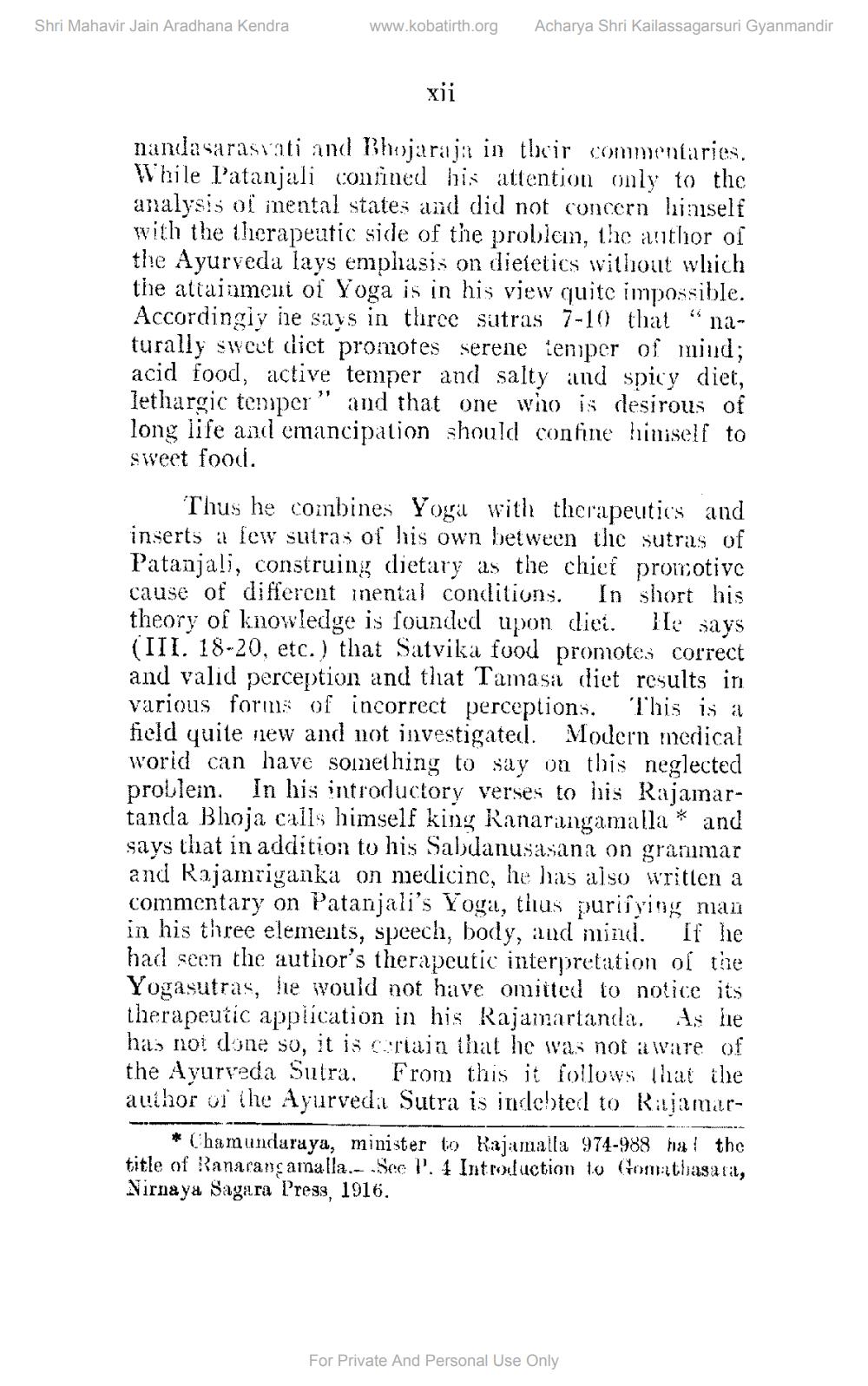________________
Shri Mahavir Jain Aradhana Kendra
www.kobatirth.org
Acharya Shri Kailassagarsuri Gyanmandir
xji
nandasarasvati and Bhujaraji in their commentaries. While Patanjali contined his attention only to the analysis oi inental states and did not concern hjaiself with the therapeutic side of the problem, the author of the Ayurveda lays emphasis on dietetics without which the attainmeui oi Yoga is in his view quite impossible. Accordingly nie says in three sutras 7-10 that "naturally sweet diet promotes serene temper of miud; acid food, active temper and salty and spicy diet, lethargic temper" and that one who is desirous of long life and emancipation should confine himself to sweet food.
Thus he combines Yoga with therapeutics and inserts i few sutras of his own between the sutras of Patanjali, construing dietary as the chief promotive cause of different inental conditions. In short his theory of knowledge is founded upon dici. He says (III. 18-20, etc.) that Satvika food promotes correct and valid perception and that Tamasa diet results in various forms of incorrect perceptions. This is a field quite new and not investigated. Modern medical world can have something to say on this neglected problein. In his introductory verses to his Rajamartanda Bhoja calls himself king Ranaringamalla * and says that in addition to his Sabdanusasana on grammar and Rajamriganka on medicine, he has also written a commentary on Patanjali's Yoga, thus purifying man in his three elements, speech, body, and mind. If lie had seen the author's therapeutic interpretation of the Yogasutras, he would not have omitted to notice its therapeutic application in his Rajamartanda. As he has not done so, it is coriaia that he was not aware of the Ayurveda Sutra. From this it follows thai che author oi (he Ayurveda Sutra is indebted to Riljamar
* Chamundaraya, minister to Rajamalla 974-988 hai the title of Ranacan amalla. See P. 4 Introduction to Gomaathasarit, Nirnaya Sagara Press, 1916.
For Private And Personal Use Only




